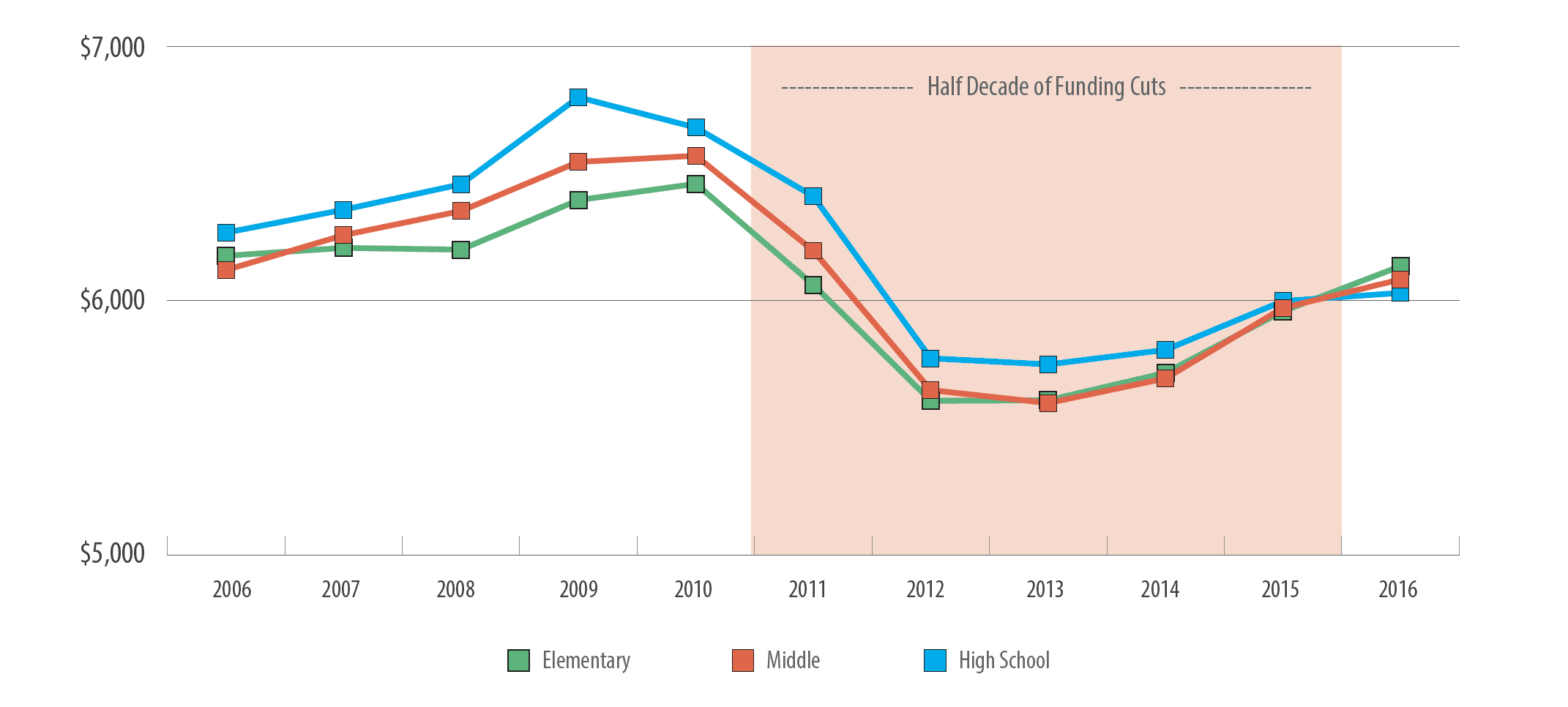Making sure our children receive a quality education is essential for the future prosperity of Texas. To be successful academically, many students rely on programs like tutoring or bilingual education. But a new analysis from CPPP and University of Texas at Austin professor Dr. Michael Marder found that when the state cuts funding to public education, students from low-income households and those in need of additional support lose the most.
In response to the economic recession, in 2011 lawmakers cut $5.3 billion from the two-year public education budget, about $500 per student each year. This forced school districts to make some really tough choices on how to serve a growing student population with fewer resources. Funding is beginning to recover, but the “hole” that these cuts created in school spending is about five years long and five billion dollars deep.
In 2015, lawmakers got back to investing the same amount of funding in terms of inflation-adjusted dollars in our schools as it had before the cuts. They didn’t, however, adjust this funding to account for student growth. As a result, our state has still not returned to pre-recession levels of public school funding.

Money in education matters. Well-funded schools are better able to attract and retain high-quality teachers, provide individualized attention through small class sizes, and provide an engaging curriculum that includes arts and music – all things that promote higher academic achievement. Yet elementary schools with the greatest percent of low-income students are spending 40 percent less per student on bilingual education in 2016 than they did in 2008, and 21 percent less on the programs and services that keep students on track.
As study co-author Dr. Michael Marder said, “After 2011, Texas public schools had to grapple with half a decade of funding reductions. We wanted to check on what schools cut to deal with this, and we found that programs to help students struggling the most were cut the most.”
Support for this research was provided by the Texas Education Grantmakers Advocacy Consortium (TEGAC).
Read the full report here, and follow me on Twitter for more updates on Texas public education.
